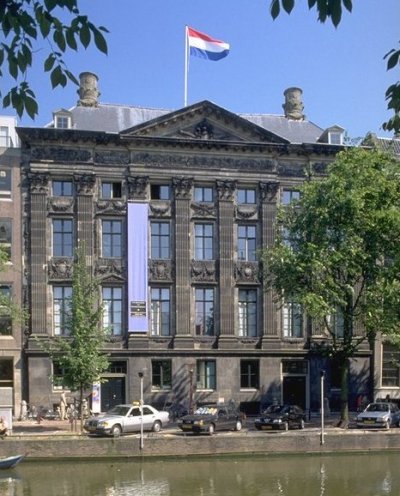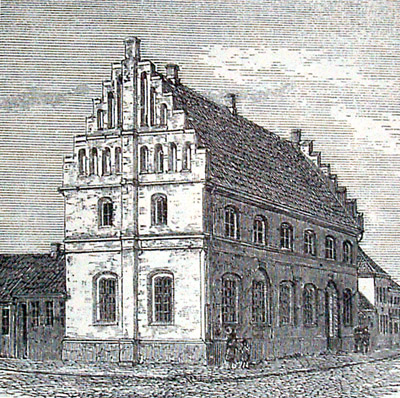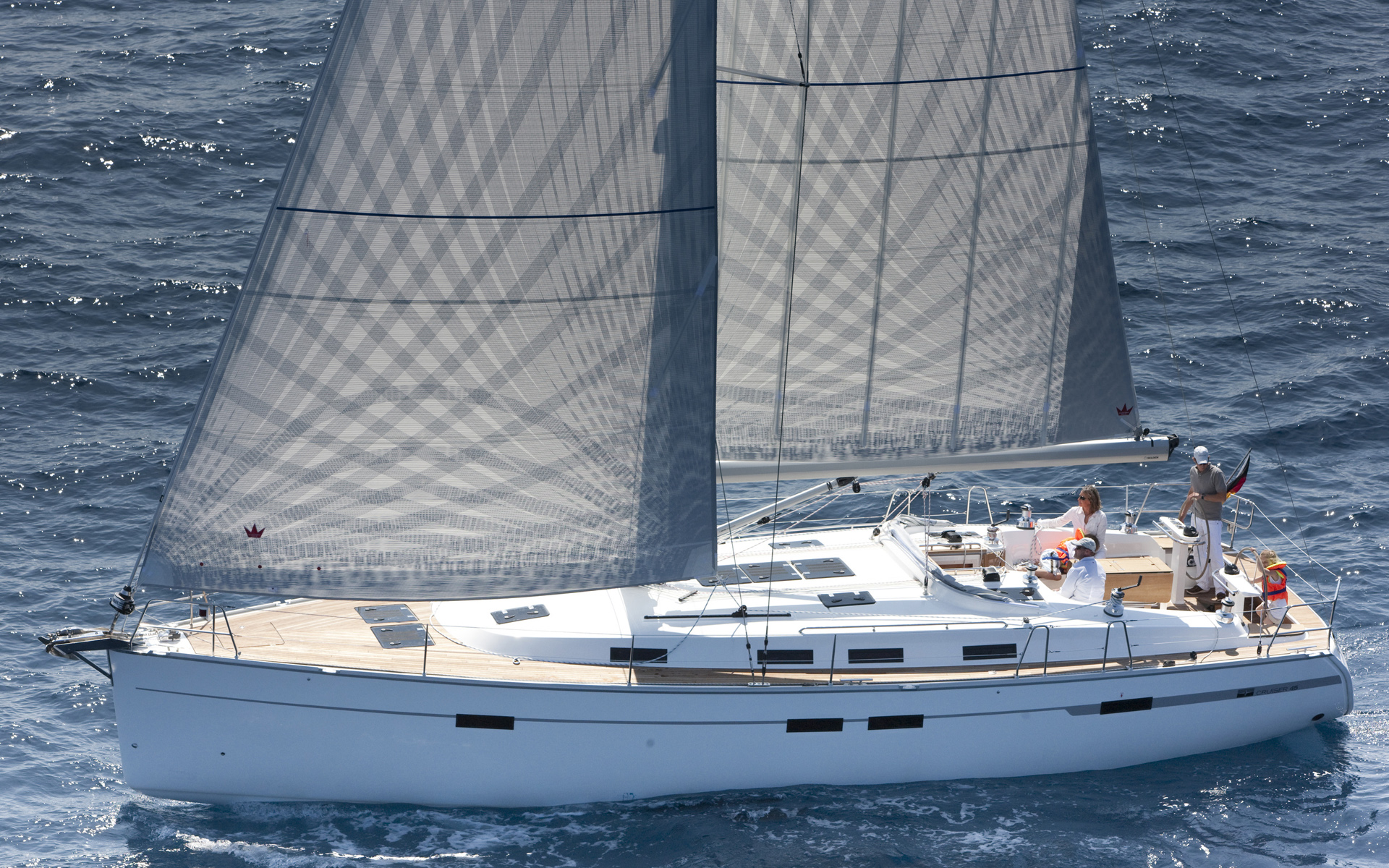|
Nicholas Van Rijn
Nicholas van Rijn (2376 to c. 2500 AD) is a fictional character who plays the central role in the first half of Poul Anderson's Technic History cycle of stories and novels. Description Nicholas van Rijn is a flamboyant capitalist adventurer, and is of Dutch ancestry (apparently a resident of Djakarta, and thus an Indo). His speech is bombastic and heavily laced with unconventional constructs, puns, oaths, and words from various Northern European languages: in particular Dutch, German, and possibly Danish. Although he frequently employs malapropisms such as "Angular-Saxon" or "hunky-dinghy", they are often so devious or apropos as to appear intentional. Some more minor characters have used a similar patois. Van Rijn is well-educated in Earth's literature and history and also displays considerable cunning and capacity for bullying armed aliens into doing his bidding. Although a formidable individual in necessity (his battle cries have included "God send the Right!", " Kristm ... [...More Info...] [...Related Items...] OR: [Wikipedia] [Google] [Baidu] |
Van Rijn
Van Rijn is a Dutch language, Dutch toponymic surname meaning "from (the) Rhine river". Common spelling variations are Van Rhijn and the anglicized version Van Ryn. People with this surname include: ;Van Rijn *Anna van Rijn (ca.1512–1607), Dutch philanthropist in: Digitaal Vrouwenlexicon van Nederland. *Rembrandt van Rijn (1606–1669), Dutch painter and etcher *Titus van Rijn (1641–1668), single surviving child of Rembrandt and Saskia van Uylenburgh *Guido van Rijn (born 1950), Dutch blues and gospel historian *Martin van Rijn (born 1956), Dutch business leader and politician *Karen van Rijn (born 1960s), Dutch cricketer *Wilma van Rijn née ''van Hofwegen'' (born 1971), Dutch freestyle swimmer *Rolf van Rijn (born 1972), Dutch basketball player ;Van Reijn *Theo van Reijn (1884� ... [...More Info...] [...Related Items...] OR: [Wikipedia] [Google] [Baidu] |
Dutch Golden Age
The Dutch Golden Age ( ) was a period in the history of the Netherlands which roughly lasted from 1588, when the Dutch Republic was established, to 1672, when the '' Rampjaar'' occurred. During this period, Dutch trade, scientific developments, art and overseas colonisation was among the most prominent in Europe. The first half of the period spanned from the beginning of the Eighty Years' War until its conclusion in 1648, with the second half lasting until the outbreak of the Franco-Dutch War. During the period, Dutch colonialists, many of them affiliated with the East India Company and West India Company, established trading posts and colonies in the Americas, Southern Africa and Asia, protected by the powerful Dutch States Navy. The Dutch also dominated the triangular trade and Atlantic slave trade during this period. Dutch culture flourished during this period as well. However, by the end of the 17th century, conflicts with neighbouring powers as well as declining eco ... [...More Info...] [...Related Items...] OR: [Wikipedia] [Google] [Baidu] |
Ribe
Ribe () is a town in south-west Jutland, Denmark, with a population of 8,367 (2025). It is the seat of the Diocese of Ribe. Until 1 January 2007, Ribe was the seat of both a surrounding municipality and county. It is now part of the enlarged Esbjerg Municipality in the Region of Southern Denmark. It is the oldest town in Denmark. History The town was a center of commercial activity in the early 8th century, and this may have originated with royal influence. Coins may have been struck there in 720. Whichever king was involved in the digging of the Kanhave Canal may have been involved in the establishment of Ribe also. Trade contacts were mostly with Frisia and England. Of the over 300 sceatas found in Denmark, 216 come from in or around Ribe, most of them were of the Frisian Wodan type, and these were likely minted in Ribe in the early eighth century. The Ancient Diocese of Ribe was established in 948 with the consecration of Leofdag of Ribe as its first bishop. Early in t ... [...More Info...] [...Related Items...] OR: [Wikipedia] [Google] [Baidu] |
Valdemar IV Of Denmark
Valdemar IV Atterdag, Valdemar Christoffersen or Waldemar (24 October 1375) was King of Denmark from 1340 to 1375. He is mostly known for his reunion of Denmark after the bankruptcy and mortgaging of the country to finance wars under previous rulers. He gradually reacquired the lost territories that had been added to Denmark over the centuries. His heavy-handed methods, endless taxation, and usurpation of rights long held by noble families led to uprisings throughout Valdemar's reign. Accession He was the youngest son of King Christopher II of Denmark and Euphemia of Pomerania. He spent most of his childhood and youth in exile at the court of Emperor Louis IV in Bavaria, after the defeats of his father and the death and imprisonment, respectively, of his two older brothers, Eric Christoffersen of Denmark, Eric and Otto, Duke of Lolland and Estonia, Otto, at the hand of the Holsteiners. Here he acted as a pretender, waiting for a comeback. Following the assassination of Gerhard II ... [...More Info...] [...Related Items...] OR: [Wikipedia] [Google] [Baidu] |
Gunpowder
Gunpowder, also commonly known as black powder to distinguish it from modern smokeless powder, is the earliest known chemical explosive. It consists of a mixture of sulfur, charcoal (which is mostly carbon), and potassium nitrate, potassium nitrate (saltpeter). The sulfur and charcoal act as fuels while the saltpeter is an oxidizer. Gunpowder has been widely used as a propellant in firearms, artillery, rocketry, and pyrotechnics, including use as a blasting agent for explosives in quarrying, mining, building Pipeline transport, pipelines, tunnels, and road#Construction, roads. Gunpowder is classified as a Explosive#Low, low explosive because of its relatively slow decomposition rate, low ignition temperature and consequently low brisance, brisance (breaking/shattering). Low explosives deflagration, deflagrate (i.e., burn at subsonic speeds), whereas high explosives detonation, detonate, producing a supersonic shockwave. Ignition of gunpowder packed behind a projectile generates ... [...More Info...] [...Related Items...] OR: [Wikipedia] [Google] [Baidu] |
Galaxy Science Fiction
''Galaxy Science Fiction'' was an American digest-size science fiction magazine, published in Boston from 1950 to 1980. It was founded by a French-Italian company, World Editions, which was looking to break into the American market. World Editions hired as editor H. L. Gold, who rapidly made ''Galaxy'' the leading science fiction magazine of its time, focusing on stories about social issues rather than technology. Gold published many notable stories during his tenure, including Ray Bradbury's "The Fireman", later expanded as ''Fahrenheit 451''; Robert A. Heinlein's ''The Puppet Masters''; and Alfred Bester's '' The Demolished Man''. In 1952, the magazine was acquired by Robert Guinn, its printer. By the late 1950s, Frederik Pohl was helping Gold with most aspects of the magazine's production. When Gold's health worsened, Pohl took over as editor, starting officially at the end of 1961, though he had been doing the majority of the production work for some time. Under Pohl ' ... [...More Info...] [...Related Items...] OR: [Wikipedia] [Google] [Baidu] |
Algis Budrys
Algirdas Jonas "Algis" Budrys (January 9, 1931 – June 9, 2008) was a Lithuanian-American science fiction author, copy editing, editor and critic. He was also known under the pen names Frank Mason, Alger Rome in collaboration with Jerome Bixby, John A. Sentry, William Scarff and Paul Janvier. In the 1990s he was the publisher and editor of the science fiction magazine ''Tomorrow Speculative Fiction''. Biography Early life and education Budrys was born in Königsberg, German Empire, Germany (present-day Kaliningrad, Russia). His father Jonas Budrys was the Consul (representative)#Consular rank, consul general of Lithuania. In 1936, when Budrys was five years old, Jonas was appointed as the consul general in New York City. After the Soviet occupation of the Baltic states (1940), Soviet Union's occupation of Lithuania in 1940, Budrys helped his family run a chicken farm in New Jersey while his father was part of the exiled Lithuanian Diplomatic Service, since the United St ... [...More Info...] [...Related Items...] OR: [Wikipedia] [Google] [Baidu] |
Dominic Flandry
Dominic Flandry is a fictional character and the protagonist of the second half of American writer Poul Anderson's Technic History science fiction series. He first appeared in 1951. The space opera series is set in the 31st century, during the waning days of the Terran Empire. Flandry is a dashing field agent of the Imperial Intelligence Corps who travels the stars to fight off imminent threats to the empire from both external enemies and internal treachery. His long-time archenemy is Aycharaych, a cultured but ruthless telepathic spymaster who weaves plots for the expansionist rival empire of the alien Merseians. The illegitimate son of a minor nobleman, Flandry rises to considerable power within the decadent Empire by his own wits, and enjoys all the pleasures his position in society gives him. Still he is painfully conscious of the impending fall of the Terran Empire and the subsequent "Long Night" of a galactic dark age. His career is dedicated to holding it off for as long ... [...More Info...] [...Related Items...] OR: [Wikipedia] [Google] [Baidu] |
Saint Nicholas
Saint Nicholas of Myra (traditionally 15 March 270 – 6 December 343), also known as Nicholas of Bari, was an early Christian bishop of Greeks, Greek descent from the maritime city of Patara (Lycia), Patara in Anatolia (in modern-day Antalya Province, Turkey) during the time of the Roman Empire. Because of the many miracles attributed to his intercession, he is also known as Nicholas the Wonderworker. Saint Nicholas is the patron saint of sailors, merchants, archers, repentant thieves, children, brewers, pawnbrokers, toymakers, unmarried people, and students in various cities and countries around Europe. His reputation evolved among the pious, as was common for early Christian saints, and his legendary habit of secret gift-giving gave rise to the folklore of Santa Claus ("Saint Nick") through Sinterklaas. Little is known about the historical Saint Nicholas. The earliest accounts of his life were written centuries after his death and probably contain legendary elaborations. H ... [...More Info...] [...Related Items...] OR: [Wikipedia] [Google] [Baidu] |
Saint Dismas
The Penitent Thief, also known as the Good Thief, Wise Thief, Grateful Thief, or Thief on the Cross, is one of two unnamed thieves in Luke's account of the crucifixion of Jesus in the New Testament. The Gospel of Luke describes him asking Jesus to "remember him" when Jesus comes into his kingdom. The other, as the impenitent thief, challenges Jesus to save himself and both of them to prove that he is the Messiah. He is officially venerated as a saint in the Eastern Orthodox Church, Roman Catholic Church and Oriental Orthodox church. The Roman Martyrology places his commemoration on 25 March, together with the Feast of the Annunciation, because of the ancient Christian tradition that Christ (and the penitent thief) were crucified and died exactly on the anniversary of Christ's incarnation. Name He is given the name Dismas in the Gospel of Nicodemus and is traditionally known in Catholicism as Saint DismasLawrence Cunningham, ''A brief history of saints'' (2005), page 32. ... [...More Info...] [...Related Items...] OR: [Wikipedia] [Google] [Baidu] |
David Falkayn
David (; , "beloved one") was a king of ancient Israel and Judah and the third king of the United Monarchy, according to the Hebrew Bible and Old Testament. The Tel Dan stele, an Aramaic-inscribed stone erected by a king of Aram-Damascus in the late 9th/early 8th centuries BCE to commemorate a victory over two enemy kings, contains the phrase (), which is translated as "House of David" by most scholars. The Mesha Stele, erected by King Mesha of Moab in the 9th century BCE, may also refer to the "House of David", although this is disputed. According to Jewish works such as the ''Seder Olam Rabbah'', ''Seder Olam Zutta'', and ''Sefer ha-Qabbalah'' (all written over a thousand years later), David ascended the throne as the king of Judah in 885 BCE. Apart from this, all that is known of David comes from biblical literature, the historicity of which has been extensively challenged,Writing and Rewriting the Story of Solomon in Ancient Israel; by Isaac Kalimi; page 32; Cambr ... [...More Info...] [...Related Items...] OR: [Wikipedia] [Google] [Baidu] |
Yacht
A yacht () is a sail- or marine propulsion, motor-propelled watercraft made for pleasure, cruising, or racing. There is no standard definition, though the term generally applies to vessels with a cabin intended for overnight use. To be termed a , as opposed to a , such a pleasure vessel is likely to be at least in length and may have been judged to have good aesthetic qualities. The Commercial Yacht Code classifies yachts and over as . Such yachts typically require a hired crew and have higher construction standards. Further classifications for large yachts are : carrying no more than 12 passengers; : solely for the pleasure of the owner and guests, or by Flag#At sea, flag, the country under which it is registered. A superyacht (sometimes ) generally refers to any yacht (sail or power) longer than . Racing yachts are designed to emphasize performance over comfort. Charter yachts are run as a business for profit. As of 2020, there were more than 15,000 yachts of sufficient size ... [...More Info...] [...Related Items...] OR: [Wikipedia] [Google] [Baidu] |








